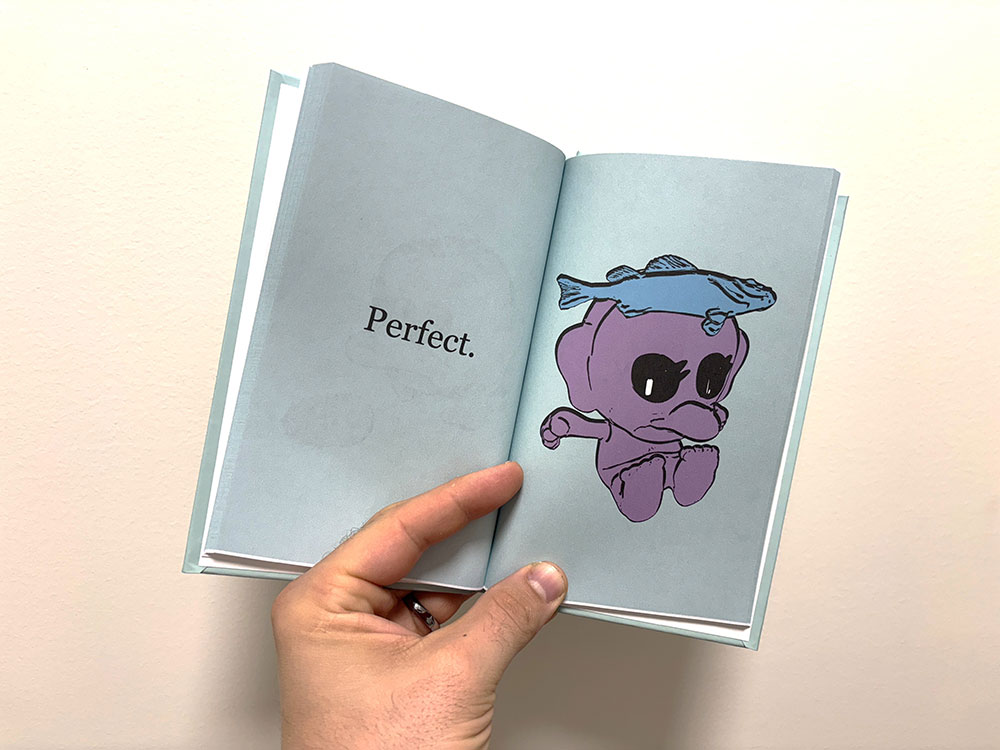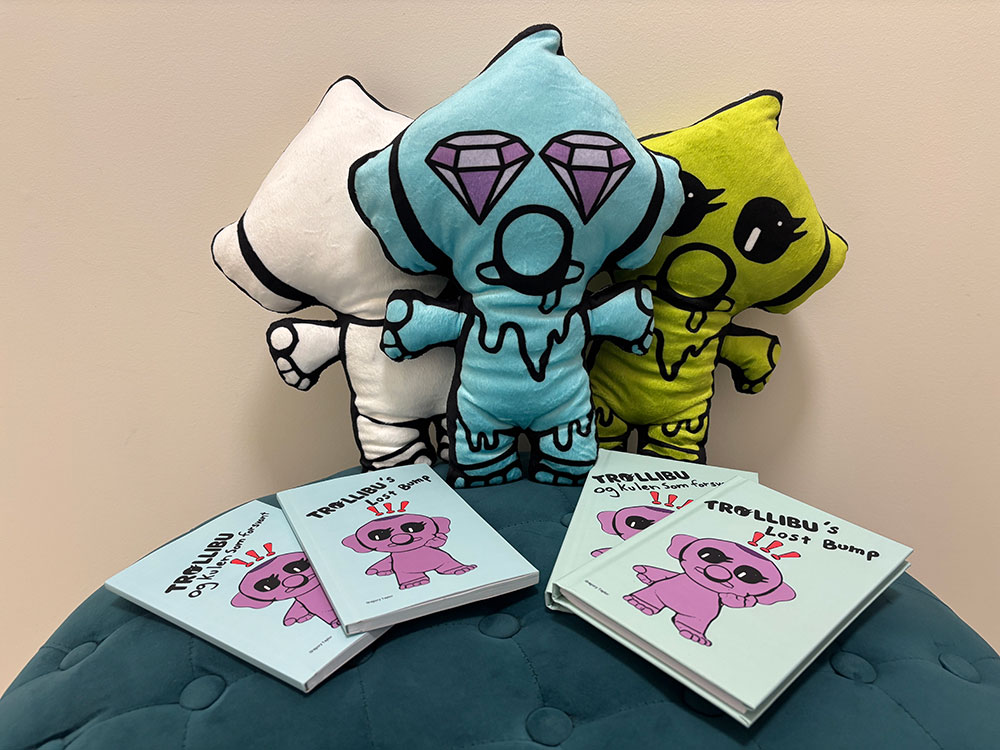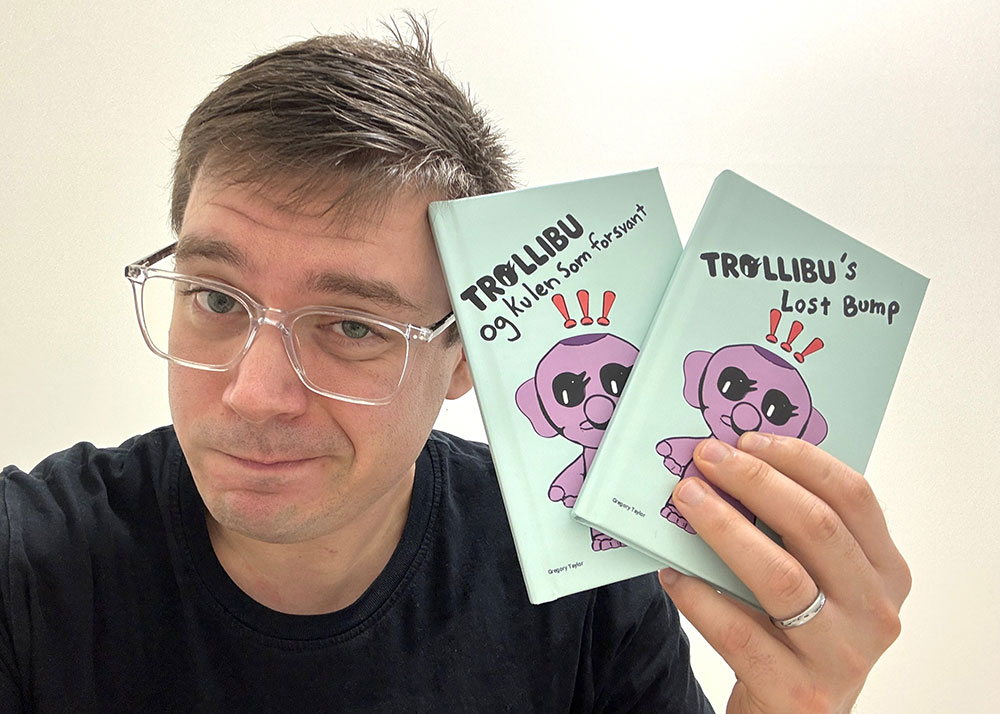If you think trolls belong under bridges or lurking in dusty corners of folklore, think again. Trollibu is here, and he’s bringing chaos, colour, and a cheeky sense of adventure to Norway’s children—and their parents’ sanity. Created by Gregory Taylor, Trollibu’s Lost Bump is the latest entry in the anarchic world of this pint-sized troublemaker, now leaping off pages and into plush toys, figurines, and all manner of merchandise.
Taylor, an artist with a foot in every creative camp you can imagine—sculpture, illustration, sound, digital art—crafted Trollibu in Harestua, a small town that he says offered the perfect mix of quiet life and wild imagination. The character draws inspiration from Norwegian folklore, reinterpreting the rough, mischievous trolls that have haunted forests and mountains for centuries. “I wanted a character that’s untidy, unpredictable, and a bit mental,” he says with a grin. “A troll that’s human in its ridiculousness but still very much a troll. That’s Trollibu.”

The book itself, Trollibu’s Lost Bump, spins a story that is deceptively simple but packed with charm. Trollibu has lost his bump—the very essence of his cheeky, chaotic personality. Without it, he’s forced to confront himself, dig into what makes him, well… him. “It’s about identity, about mischief and curiosity,” Taylor explains. “Losing your bump is like losing your spark. The story is him finding it again—sometimes literally, sometimes metaphorically, sometimes under a rock or in a puddle.”
And yes, this little troll is bilingual. Taylor made the book available in both English and Norwegian. “Why limit the madness to one country?” he asks. “Kids in Oslo, London, or anywhere else should be able to meet Trollibu without translation hurdles. Mischief is universal.”
Visually, the book is a riot. Taylor uses a comic-strip, almost punk-inspired style—heavy lines, exaggerated expressions, and saturated colour palettes that make Trollibu jump off the page. The design refuses to be neat or polite; it’s loud, in-your-face, and very much alive. “I wanted the illustrations to have teeth,” Taylor says. “Every frame, every squiggle, it’s about movement and attitude.”
Trollibu isn’t just confined to the book. The character has morphed into a small empire of toys and collectibles, each designed personally by Taylor. Plush Trollibu, keychains, and figurines allow the character to spill into the real world. “Kids can hug him, wrestle him, throw him down a hill… whatever they want,” he says. “He’s designed to survive life, not just look pretty on a shelf.”

Taylor describes Trollibu as “a pop-art anarchist in troll form.” The brand itself follows the same philosophy—unpolished, energetic, and unapologetically playful. While many children’s characters are neat, pastel-coloured, and designed to soothe, Trollibu smacks of irreverence and fun, demanding engagement, laughter, and a little bit of chaos.
The book, while aimed at children, has a sly layer for adults. Parents reading along can enjoy the subtle jokes and quirky humour scattered throughout. There’s something inherently British-punk about the attitude: anti-authoritarian, self-expressive, and refusing to sit quietly in a corner.
Taylor hopes Trollibu encourages a sense of curiosity and confidence in kids. “Find your bump. Misbehave a little. Explore your world,” he says. “Trollibu’s adventures are about embracing who you are, bump or no bump.”
The release of Trollibu’s Lost Bump signals only the beginning for this wild-haired little troll. With books, toys, and a growing collection of playful paraphernalia, Trollibu is poised to travel from Norwegian towns to homes worldwide. And if you’re lucky, you might just stumble across a Trollibu figure lurking somewhere unexpected.
For anyone curious about the chaos, mischief, and pure creative energy behind Trollibu, more information can be found at Trollibu.no. The site offers insight into the books, the merchandise, and the mind of the artist who refuses to let his trolls sit still.
Whether read, played with, or hugged in plush form, Trollibu offers a little bit of disorder in a world that can often feel too tidy—a reminder that it’s okay to be mischievous, imaginative, and a bit chaotic.






